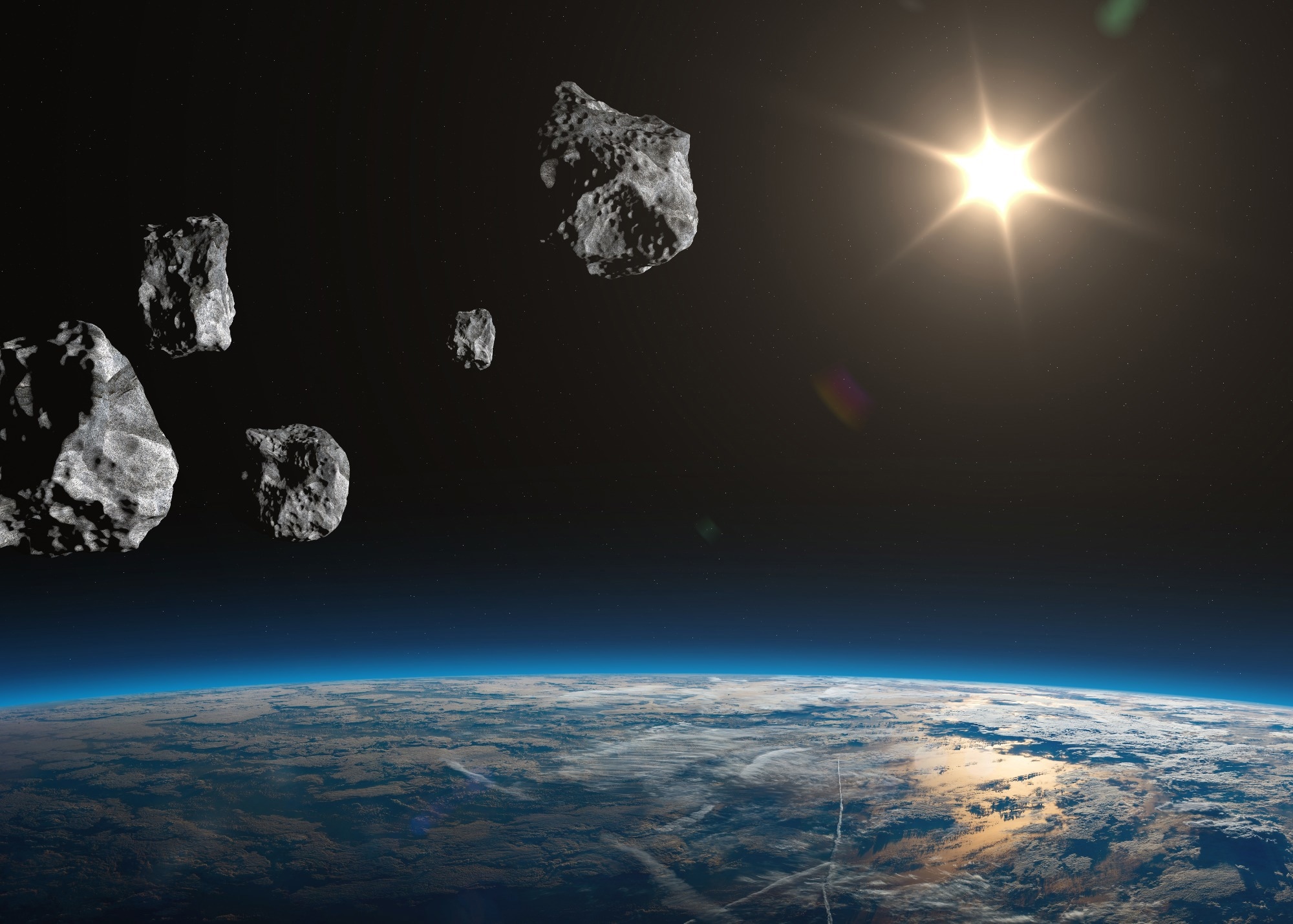Researchers have explored the development and testing of optical mining techniques for extracting water and volatiles from carbonaceous asteroids, particularly focusing on simulants called Nectar A and Nectar B. The study was published in Acta Astronautica. Recognizing asteroids as vital resources for space exploration and industry, the study aims to demonstrate how focused solar energy can induce thermal spalling—a process where brittle materials explosively fracture due to high thermal gradients—facilitating efficient resource extraction.

Image Credit: buradaki/Shutterstock.com
Background
Asteroids, particularly carbonaceous types, are rich in hydrated minerals capable of releasing significant quantities of water when heated. These resources are crucial for supporting long-duration human missions and future space economies.
Thermal spallation, which forms the core of optical mining, involves heating the asteroid surface with concentrated solar energy, generating surface stresses that cause the brittle material to fracture and fragment.
Previous studies have examined the mechanics of thermal spallation in terrestrial contexts, notably in concrete technology, where factors such as thermal gradients, mineral composition, and pore pressure buildup influence failure behavior.
The unique environment of space and low-gravity conditions poses additional challenges and opportunities for mining operations. Understanding how mineral morphology affects fracture behavior, and beam parameters, particularly irradiance distribution, influence excavation rates, is essential for optimizing mining efficiency.
The Current Study
The authors utilized a dedicated optical mining testbed housed within a vacuum chamber that simulates space conditions. The chamber, equipped with precision measurement tools, including beam irradiance sensors, load cells for mass measurement, and residual gas analyzers (RGAs), allowed for real-time assessment of the mining process. They employed a high-powered laser system with adjustable beam properties to irradiate the simulant samples.
The simulants, Nectar A and Nectar B, differ primarily in their mineral content; Nectar B contains exfoliated vermiculite, which impacts its response to heating. The experimental procedure involved directing focused laser beams onto asteroid simulants to induce thermal spallation, while varied parameters such as beam irradiance levels and beam distribution profiles were systematically tested.
The team measured excavation rates, water vapor production, and mineral morphology changes. Post-test analyses included thermogravimetric analysis coupled with mass spectrometry (TGA-MS), enabling quantification of water and other volatiles released during the process.
Results and Discussion
Precise control over beam irradiance is pivotal for optimizing excavation rates. Variations in irradiance distribution, especially over the laser's initial propagation distance in the vacuum chamber, significantly affected the spallation efficiency.
A higher irradiance beyond 350 W/cm² correlated with a decline in excavation performance, likely due to excessive localized heating leading to undesirable ductile behavior instead of brittle fracturing. This emphasizes the importance of maintaining optimal irradiance levels and beam uniformity for effective resource extraction. The experiments revealed a clear relationship between irradiance, mineral morphology, and volatile release: water and other volatiles were released more efficiently when the mineral structure remained brittle during heating.
The study also observed a characteristic "V"-shaped mining pattern, which resulted from uneven irradiance—center regions with higher intensity experienced faster excavation compared to the edges. Broader beam profiles with more uniform irradiance mitigated this pattern, leading to more consistent and predictable excavation outcomes. The addition of exfoliated vermiculite in Nectar B reduced the maximum achievable excavation rate compared to Nectar A and attributed to differences in mineral structure and mechanical response to thermal stress.
Thermogravimetric analysis showed that water release closely aligned with the heating profile, with peak water vapor emissions corresponding to temperature regimes where hydration minerals decompose. The study indicated that optimal water production occurred at specific irradiance thresholds, validating the importance of beam control strategies.
The research suggests that the brittle-to-ductile transition—a phenomenon where materials shift from brittle fracture to plastic deformation—plays a critical role in the efficiency of thermal spallation. Excessive heating or high irradiance can push minerals beyond the brittle regime, decreasing fragmentation and water release, and potentially damaging equipment or reducing resource yield.
Conclusion
The research advances the understanding of optical mining for asteroid resource extraction by demonstrating the critical influence of beam irradiance control and mineral morphology on excavation and volatile release rates. Precisely managed laser irradiation enables efficient thermal spalling while preventing the transition to ductile deformation modes that diminish fracture and water release. The study confirms that broader, more uniform beam profiles produce more consistent excavation patterns, which are crucial for scalable asteroid mining operations.
The presence of exfoliated vermiculite in simulants reduces maximal excavation rates, indicating mineral composition’s importance in process optimization. The results affirm that maintaining optimal irradiance—around levels that induce brittle fracture without surpassing the brittle-to-ductile transition—is key to maximizing resource extraction efficiency. These findings suggest that future in-space mining systems will benefit from advanced optical control, adaptive beam shaping, and thorough mineralogical assessments.
Journal Reference
Broslav T., Dreyer C., et al. (2025). Optical mining of carbonaceous chondrite simulants: Testing and lessons learned in asteroid mining research. Acta Astronautica, 235, 1–16. DOI: 10.1016/j.actaastro.2025.04.033, https://www.sciencedirect.com/science/article/pii/S0094576525002334?via%3Dihub